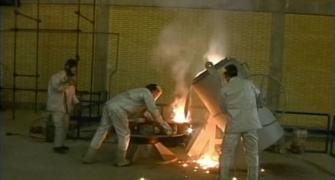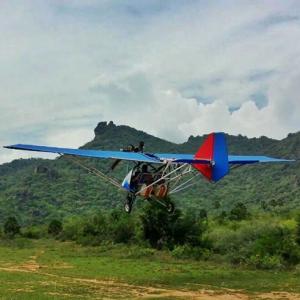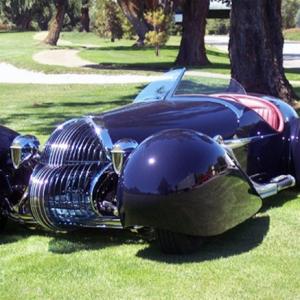The three-wheeled vehicle, with foldable rotor blades that can be extended when it needs to fly, can go up to a maximum speed of 170 km/h on road with zero to 100 km/h in ten seconds, and an estimated fuel economy of 12 km per litre.

Those who were amused by the flying car that knocked at the window of Harry Potter in J K Rowling’s famous fantasy series, can now look forward to a real flying car knocking at their door in the future.
The Netherlands-based PAL-V Europe NV has bagged a patent in India for the Personal Land and Air Vehicle (PAL-V), a flying car that can also run on roads.
 The car made its successful maiden flight in The Netherlands in 2012 and the company has been developing PAL-V One, a two-seat hybrid car and gyroplane with the convenience of fully integrated door-to-door transportation.
The car made its successful maiden flight in The Netherlands in 2012 and the company has been developing PAL-V One, a two-seat hybrid car and gyroplane with the convenience of fully integrated door-to-door transportation.
It can be driven to the nearest airfield and then take off just like any other airplane.
The three-wheeled vehicle, with foldable rotor blades that can be extended when it needs to fly, can go up to a maximum speed of 170 km/h on road with zero to 100 km/h in ten seconds, and an estimated fuel economy of 12 km per litre.
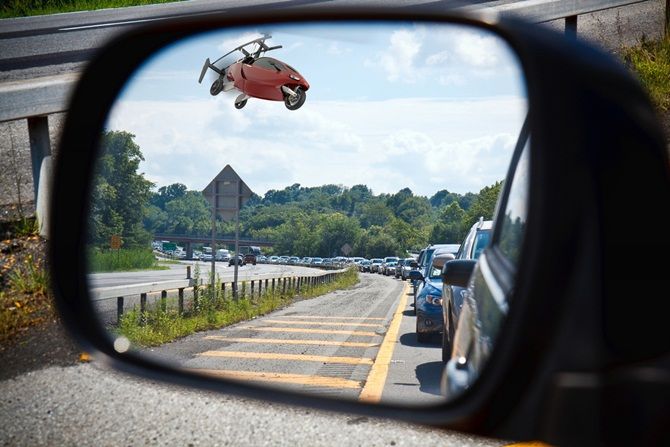 In its flight performance, it can move up to a maximum speed of 180 km/h and minimum speed for level flight at 50 km/h.
In its flight performance, it can move up to a maximum speed of 180 km/h and minimum speed for level flight at 50 km/h.
The take-off roll can happen at 165 metres and the landing roll is around 30 metres, while the estimated fuel economy is 28 l/h, according to the target specifications.
When airborne, it usually flies below 4,000 feet (1,200 m), the airspace available for uncontrolled Visual Flight Rules (VFR) traffic and thus, there will be no interference from commercial air traffic.
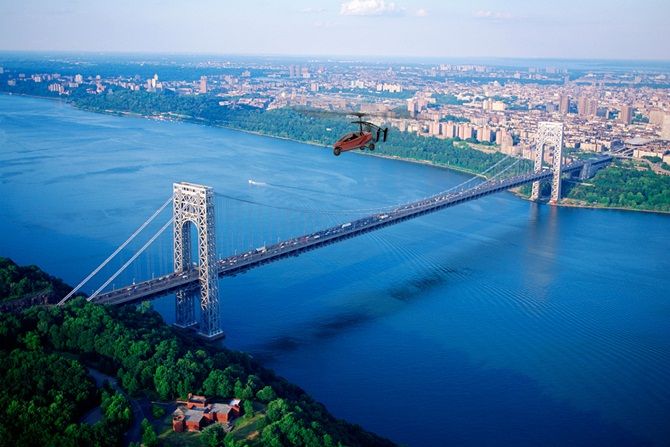 Furthermore, the PAL-V ONE is powered by a robust, flight certified aircraft engine, claims the company.
Furthermore, the PAL-V ONE is powered by a robust, flight certified aircraft engine, claims the company.
The company, in the patent specifications with the Indian Patent Office, explains that the vehicle has a rotor with foldable rotor blades and the rotor is mounted on a rotor support that is capable of displacement in the longitudinal direction of the vehicle.
In flying mode, the rotor blades are extended, and the centre of the rotor is located above the mass centre of the vehicle.
In riding mode, the rotor blades are folded such that they extend parallel to the longitudinal direction of the vehicle, while the centre of the rotor is displaced towards the front end or rear end of the vehicle.
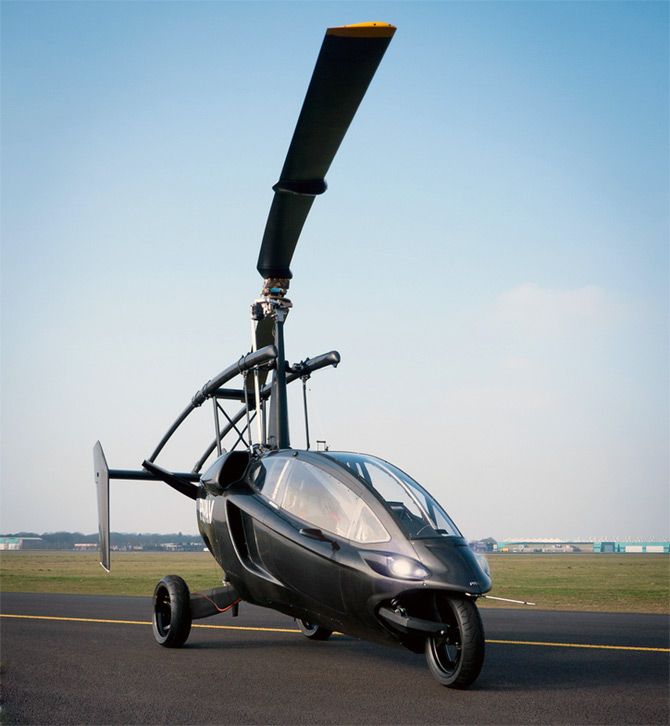 The Patent Office, Kolkata, after considering various claims and amendments following objections raised by the examiner, ordered that the amended claims are found as novel, non obvious according to The Patents Act and the patent is granted.
The Patent Office, Kolkata, after considering various claims and amendments following objections raised by the examiner, ordered that the amended claims are found as novel, non obvious according to The Patents Act and the patent is granted.
While getting a patent does not mean that the vehicle could be launched in India in near future, it gives the company exclusivity in terms of the technology in the country.
An email sent to PAL-V Europe seeking its comment and future plans did not elicit any response.
 The company officials, in a BBC report in 2012, had said that apart from individual buyers, it is also expecting the vehicle to be used during military and emergency services.
The company officials, in a BBC report in 2012, had said that apart from individual buyers, it is also expecting the vehicle to be used during military and emergency services.
The idea of a flying car, in various shapes and sizes, has been fascinating the human kind for several decades, and many might have seen it in the sci-fi movies, including Chitty Chitty Bang Bang, Star Wars, Blade Runner, Back to the Future series, among others.
Various automobile manufacturers, including the auto major Toyota, have also been working on the technology to make it real, according to reports.
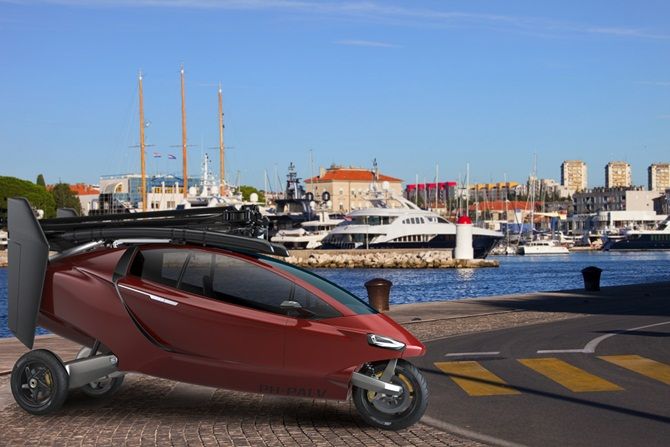 A vehicle of a similar type invented by PAL-V Europe has been described in the German patent documents, but a disadvantage of this vehicle is that it has fixed wings that must be attached before flying, and must be detached after flying in order to be capable of road traffic.
A vehicle of a similar type invented by PAL-V Europe has been described in the German patent documents, but a disadvantage of this vehicle is that it has fixed wings that must be attached before flying, and must be detached after flying in order to be capable of road traffic.
The wings and the propeller must be left at the airport, and the vehicle must return to this airport for the next flight.
This makes the transition from land-vehicle to air-vehicle and back a complicated operation, which is not attractive to the user, says the company.
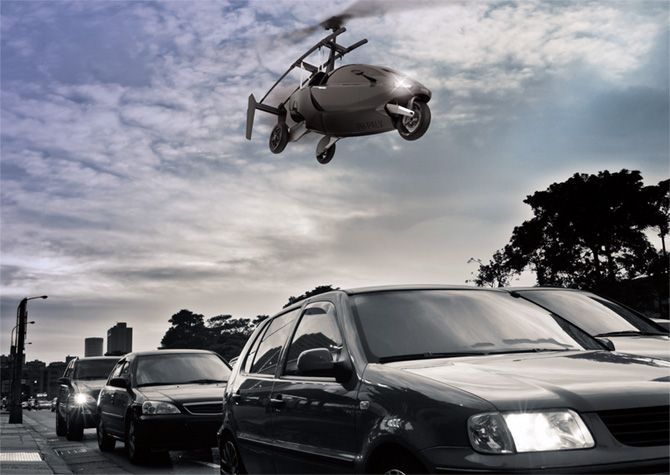 According to reports last year, Toyota Motor Engineering & Manufacturing North America, has filed a patent in the United States for a “stackable wing for an aerocar”, pertaining to a vehicle that can be flown as a fixed wing aircraft and driven as a land vehicle.
According to reports last year, Toyota Motor Engineering & Manufacturing North America, has filed a patent in the United States for a “stackable wing for an aerocar”, pertaining to a vehicle that can be flown as a fixed wing aircraft and driven as a land vehicle.

US-based Terrafugia, founded in 2006, is another player that has been developing Transition, a two-place, fixed wing street legal aircraft that fits in a single car garage and is designed to be flown in and out of general aviation airports and a TF-X, a vertical take-off and landing (VTOL) hybrid electric vehicle for personal travel in the flying car industry, says the company website.
Reports indicate that one of the front runners in the flying car market would be Slovakian firm AeroMobil, which has come out with the attractive upgraded prototype AeroMobil 3.0.

It is expected to be launched by 2017. The car, which has wings that can be folded like a wing of an insect, is straight out of a sci-fi movie.
Another flying car in the development is Moller International’s Skycar, a VTOL aircraft that looks more like an aircraft and can transport four people.
Bengaluru-based electrical engineer A K Vishwanath has also been developing a flying car model, which he calls Avishcar, with a technology that can be retrofitted into any car and make it fly, say earlier reports.
However, it would take a long while for these companies to make such vehicles commercially viable for the masses, considering various aspects, including the cost, safety, regulations and other practical reasons.
For instance, these cars are likely to come with a hefty price tag, thus making them affordable to a large section of customers.
Moreover, special attention would have to be paid to numerous aviation norms.



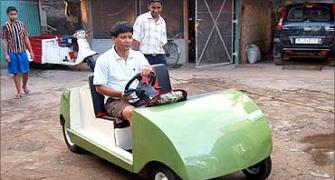
.jpg)
